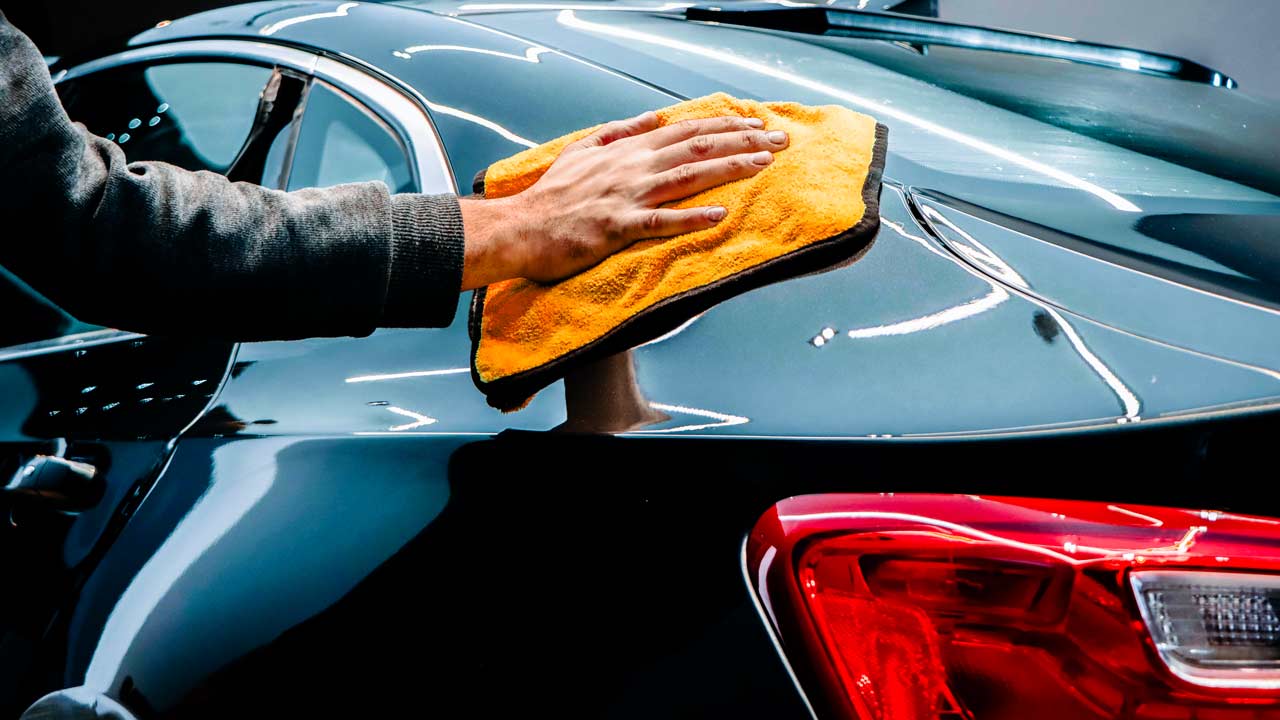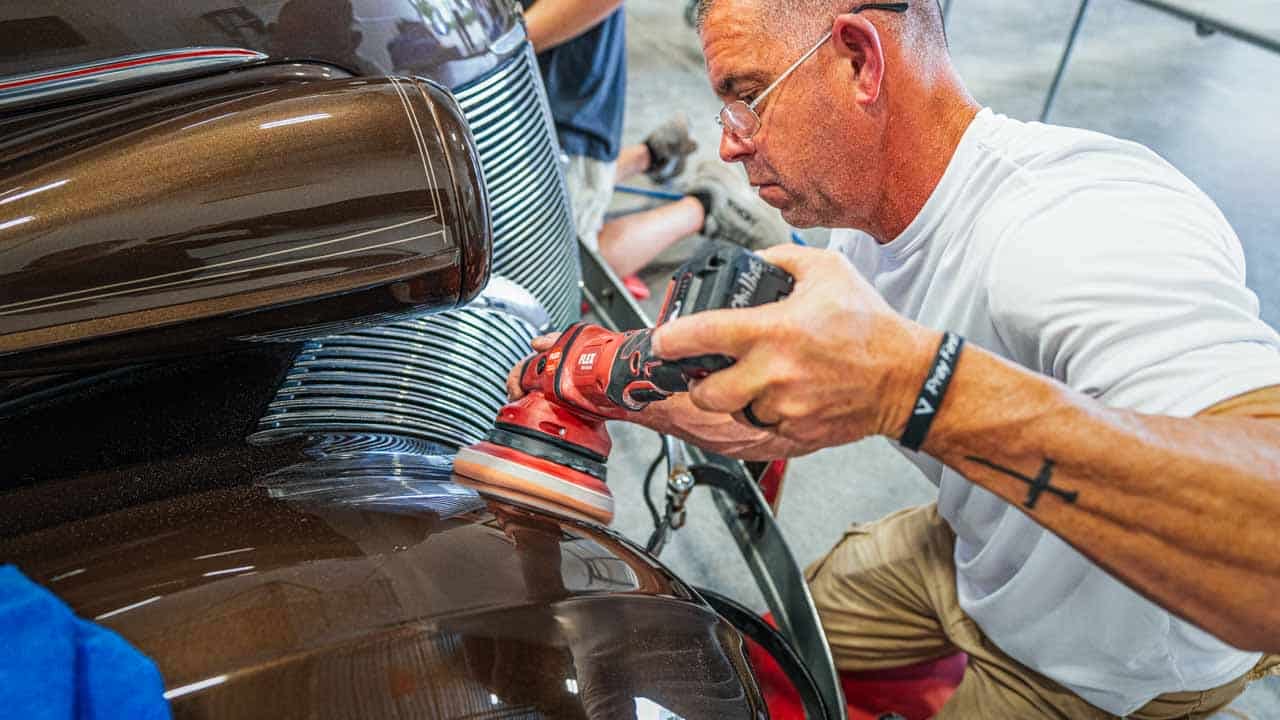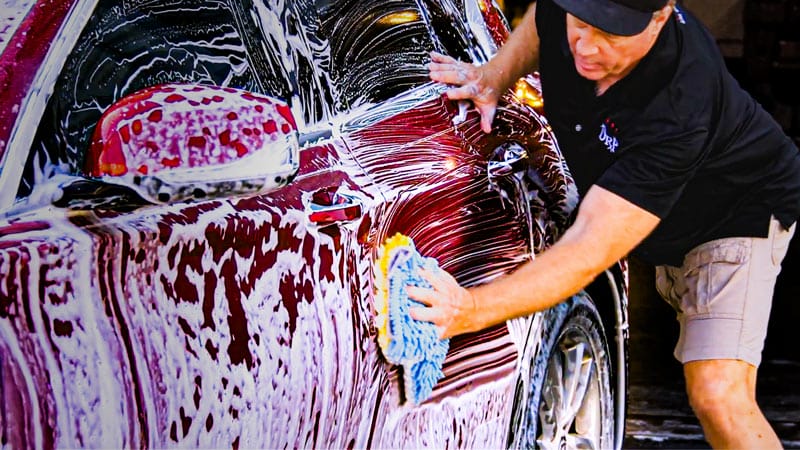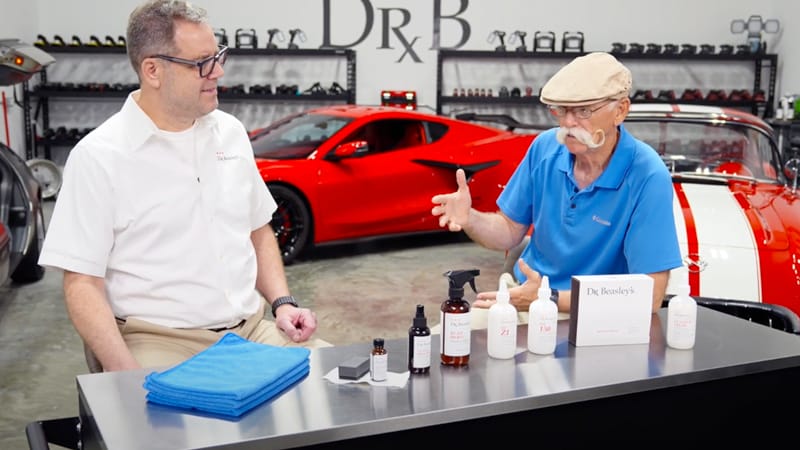Last Updated October 14, 2024
If you’re a car lover, getting that perfect shine on your vehicle is one of your ultimate goals. One type of product that helps you get your car ultra-glossy is a glaze for automotive paint.
But what is glaze? How does it make a car’s paint look better? What’s the difference between glaze and wax? Are glazes different from polish? And how do you apply a glaze effectively to a car’s paint?
This comprehensive guide will answer these questions and more.
What Is a Glaze?
A car glaze is a type of liquid product specifically designed to enhance the shine of your vehicle’s paintwork.
It contains oils and fillers that temporarily mask minor imperfections like swirl marks, fine scratches, and light oxidation.
Unlike waxes, sealants or ceramic coatings, which provide a protective layer, a glaze focuses on improving the visual depth, gloss and uniformity of the paint.

What a Car Glaze Does:
- Hides Scratches & Imperfections: Glazes use silicone and oil to temporarily fill scratches and imperfections, hiding them from sight to create a uniform appearance.
- Enhances Gloss: Glazes are formulated to increase paint’s reflectivity while enhancing depth and richness of color.
Car Glaze vs. Wax: What’s the Difference?
While both glaze and wax both enhance the shine of car paint, they serve different functions.
- Car Glaze:
- Purpose: Fills in minor imperfections and enhances gloss.
- Protection: Offers little to no protection against environmental elements.
- Longevity: Effects are temporary unless sealed.
- Car Wax:
- Purpose: Provides a semi-durable protective layer over the paint.
- Protection: Shields against UV rays, dirt, rain, and other contaminants.
- Longevity: Can last several weeks to months, depending on the product.
Glaze or Wax First?
Generally speaking, you should apply glaze first before applying the wax. Applying the wax after applying the glaze will help protect the filling benefits of the glaze and lock in the enhanced gloss.
- Apply Glaze First:
- The glaze fills in imperfections and enhances shine.
- It needs to bond directly with the paint surface.
- Apply Wax Second:
- The wax seals in the glaze’s benefits.
- Provides a protective barrier over both the glaze and paint.
Why This Order Matters:
- Applying wax first would prevent the glaze from bonding properly.
- Wax over glaze ensures longer-lasting shine and protection.

Glaze vs. Polish: Are They the Same?
While glaze and polish are both used to produce gloss and shine on car paint, they do so in different ways.
- Car Polish:
- Abrasive: Contains fine abrasives to remove a microscopic layer of paint or clear coat.
- Purpose: Eliminates imperfections like scratches, swirl marks, and oxidation.
- Use Case: Prepares the paint surface for protection.
- Car Glaze:
- Non-abrasive: Fills in imperfections instead of leveling via material removal.
- Purpose: Enhances shine and hides imperfections.
- Use Case: Temporary, non-abrasive alternative to polishing for appearance enhancement prior to protection
How to Glaze a Car
Applying glaze is a straightforward process that can significantly impact your car’s appearance.
Step-by-Step Guide:
- Wash Your Car:
- Use a high-quality foaming car wash soap.
- Use the Two-Bucket Method to avoid scratches.
- Ensure all dirt and grime are removed.
- Dry Thoroughly:
- Use microfiber towels to prevent water spots.
- Be sure your microfiber towels are clean and free of contamination to avoid scratching the paint.
- Apply the Glaze:
- Use a foam applicator pad.
- Work in small sections using circular motions.
- Apply a thin, even layer.
- Allow to Haze:
- Let the glaze sit for the time recommended by the manufacturer.
- Buff Off:
- Use a clean microfiber towel.
- Gently buff until the surface is clear and shiny.
- Apply Protection
- Apply your choice of protection to protect the glaze and paint. If working with a ceramic glaze, we recommend ceramic coating for maximum durability. Otherwise, wax works best for organic, oil-based glazes.

Ceramic Glaze for Cars: Is It Worth It?
Ceramic glazes are an advanced option that combines the benefits of traditional glaze with ceramic technology.
Benefits of Ceramic Glaze:
- Enhanced Durability: Lasts longer than standard glazes.
- Superior Shine: Provides a high-gloss, glass-like finish.
- Added Protection: Offers some protective qualities against contaminants.
- Hydrophobic Properties: Repels water and dirt effectively.
Considerations:
- Cost: Generally more expensive than traditional glazes.
- Application: May require more precise application techniques.
When and Why to Use Car Glaze
Ideal Scenarios for Using Glaze:
- Before Special Events: Car shows, weddings, or photoshoots.
- Regular Maintenance: As part of your detailing routine for optimal shine.
- After Polishing: To maximize gloss after correcting paint imperfections.
Advantages:
- Instant Results: Quickly enhances appearance without extensive work.
- Cost-Effective: Less expensive than some other detailing products.
- User-Friendly: Easy to apply, even for beginners.
Tips for Using Car Glaze Effectively
- Choose the Right Product: Some glazes actually contain abrasives or are intended for specific surfaces like carbon fiber. Make sure the glaze you choose is designed for automotive paint.
- Don’t Overapply: A thin layer is sufficient; excess glaze can be difficult to remove.
- Maintain Regularly: For sustained results, reapply glaze as recommended and keep up with waxing.
Conclusion
If you’re unable to get a car’s paint looking super shiny and scratch-free via polishing, glaze can be a valuable tool in achieving a flawless, high-gloss finish. Just remember that the effects will be temporary and should be protected afterward for maximum durability, ideally with a ceramic coating.





Is there a cure time after a Glaze is applied ?
The first time I read about it is interesting and adds a lot of knowledge!
Wait wait wait wait wait. Ceramic over glaze? I thought we were supposed to strive for a surface as clean as possible, free from contaminants like “silicone and oils” (listed here as components of glaze, before applying ceramics.
That’s a great point — we were referring to ceramic glazes that contain no silicone or oil but didn’t make that 100% clear. We’ve updated the article to reflect that.